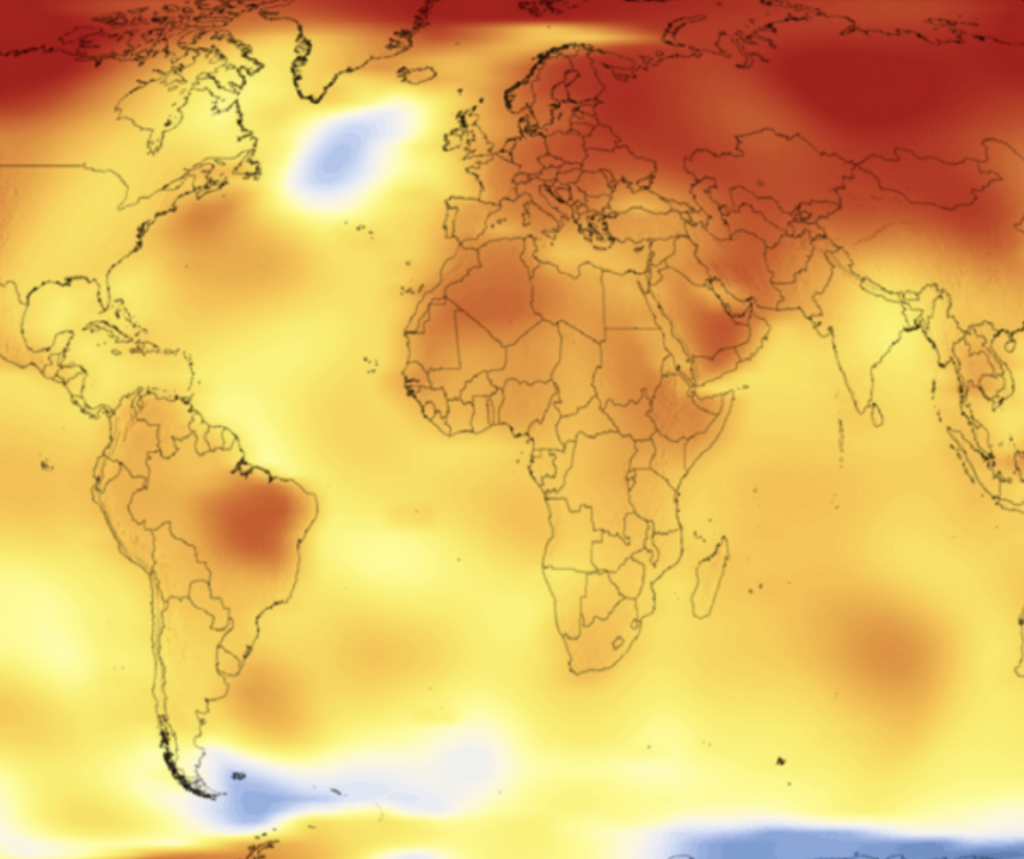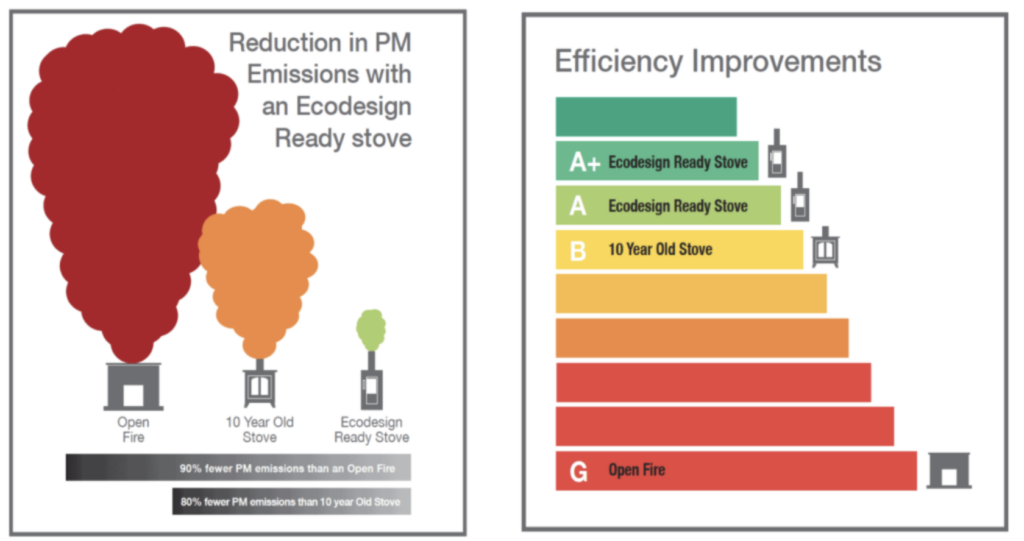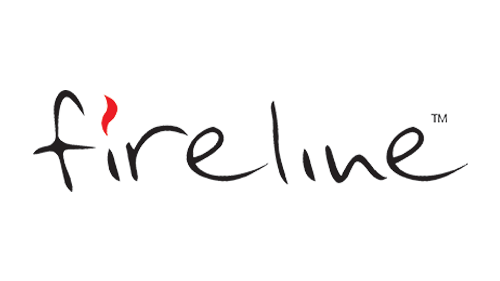After a string of hot spells, Britain’s summer of 2025 has felt uncomfortably familiar: On 1 July, Faversham in Kent reached 35.8°C, and the Met Office provisionally ranked July as one of the UK’s five warmest Julys on record, despite intermittent thundery breakdowns. As mentioned numerous times before, we are experiencing more frequent, longer, and hotter heatwaves, and scientists now have the tools to quantify how much human-driven climate change is contributing to this impact.
In late June and early July, an international attribution team (World Weather Attribution) found that climate change has already turned what used to be warm English summer days into a public‑health threat; the most intense heatwaves in southern England are now around 2°C hotter than they would have been without human‑caused warming.

The UK is adapting; new heat‑health alerts from the UK Health Security Agency (UKHSA) and the Met Office now warn when heat risks are rising, but the warnings themselves show how often we’re crossing dangerous thresholds. Mitigation matters as much as adaptation, and one of the highest‑impact places to act is closer to home than many people realise: how we heat our homes. The most intense heatwaves in southern England are now around 2°C hotter than they would have been without human-caused climate change.
Why home heating is central to cutting the UK’s carbon footprint
Heating the UK’s 28 million homes is an emissions-intensive process. In 2021, home heating accounted for approximately 18% of all UK greenhouse-gas emissions, with the majority coming from the burning of gas in boilers. Buildings as a whole remain one of the UK’s highest‑emitting sectors, at roughly 17% of national emissions. That means progress at a household level, including insulation, cleaner heating systems, and smarter controls, translates directly into national progress on climate change.
Just as importantly, these measures lower bills, improve comfort in winter, and reduce the risk of overheating in summer by keeping homes cooler for longer without the need for air conditioning.
Here is how you can take action now:
1. Stop heat leaking out (and in). Insulation and draught‑proofing lock in warmth in winter and keep midday heat at bay in summer. The Energy Saving Trust’s guidance suggests that most homes can benefit from better loft insulation, wall insulation (cavity or solid‑wall), and simple draught‑proofing to cut energy waste.
2. Be more aware of heating controls. Every central‑heating system should have time control, at least one room thermostat, and thermostatic radiator valves (TRVs). These basics, combined with smart, zoned control where possible, reduce unnecessary runtime and prevent overheating rooms. A long-standing rule of thumb from the Energy Saving Trust: turning your main thermostat down by just 1°C can reduce heating energy by around 10%, depending on your home and habits.
3. Optimise boiler settings if you still have one. Most condensing gas boilers operate more efficiently when the flow temperature is reduced, typically to around 60°C, allowing the boiler to condense for a greater portion of its cycle. Independent initiatives, such as the Money Saving Boiler Challenge and EST, explain why this can reduce gas use without lowering the thermostat set point.
4. Use less hot water. Hot water is a significant portion of total heat demand. Reducing shower time, fitting efficient showerheads and fixing drips saves energy and emissions as well as water.
5. Consider LEDs. Lighting is a relatively small slice of your energy bill, but switching to LEDs is an easy win.
The big switch: heat pumps and grants that make them more affordable
For many homes, the fastest path to a low‑carbon system is a heat pump, which moves heat rather than generating it by burning fuel. Heat pumps can also provide efficient summer cooling when needed, handy in a warming climate.
In England and Wales, the Boiler Upgrade Scheme offers grants of £7,500 for air‑source or ground‑source heat pumps, and £5,000 for eligible biomass boilers, one grant per property. If you’re curious, a good first step is to have a property-specific assessment conducted by an MCS installer, and ideally, a “fabric‑first” upgrade to improve radiators and insulation, allowing the system to operate at low flow temperatures.
If you currently burn solid fuel: replace open fires and old stoves with an Ecodesign stove.
Not everyone is ready to change their primary system immediately, and some homes, especially off‑gas rural properties, still rely on solid fuel for part of their heating. If that’s you, there are ways to make a meaningful difference right now.

Ecodesign – why it matters
From 1 January 2022, all solid-fuel heating appliances placed on the UK market (including room-heater stoves) must meet Ecodesign limits on efficiency and key pollutants, such as particulate matter (PM). Independent certification schemes, such as clearSkies and HETAS Cleaner Choice, go beyond the legal minimums to highlight stoves with even lower emissions.
Ecodesign stoves produce up to 90% less particulate pollution than an open fire and around 80% less than an older non‑compliant stove, a huge reduction if you currently have an open hearth or a 10‑ to 20‑year‑old stove. The diagram below shows these differences:

Five “burn better” rules that help reduce emissions:
1. Use only dry, “Ready to Burn” fuel. In England, wood sold in quantities up to 2 m³ must be certified below 20% moisture. Wet wood smokes, wastes heat and accelerates chimney deposits.
2. Know your local rules. Many urban areas are Smoke Control Areas. There, you must use a Defra‑exempt appliance if you want to burn wood, and fines apply for visible smoke or buying unauthorised fuel.
3. Right‑size, install and maintain. Get a competent installer (e.g., HETAS Registered), discover the correct output for your room, and have the chimney swept regularly.
4. Run hot, clean fires. Follow the manufacturer’s instructions on air settings and refuelling, and never “slumber” a stove on low air with damp logs.
5. Ventilate safely. Ensure adequate combustion air and fit a carbon‑monoxide alarm.
If you’re still using an open fireplace, replacing it with an Ecodesign is one of the most impactful changes you can make for both climate and local air quality. Don’t just heat smarter, stay cooler, passively.
With more hot spells on the way, design and behavioural changes can help keep homes bearable without resorting to energy-hungry cooling.
Shading and solar control:
External shutters/awnings and well‑chosen blinds can reduce the impact of heat from the sun in your home. England’s Approved Document O (the “Overheating” regulation in force since June 2022) sets design requirements for limiting solar gains and providing effective means of removing excess heat in new residential buildings; many of its principles apply to retrofit.
Night‑purge ventilation. Open windows where safe to flush out the heat overnight; close them and draw the blinds during the day to trap cooler air. Secure ventilation options are highlighted in Part O guidance.
Use what you have efficiently. If you already have a heat pump, its cooling mode is typically more efficient than that of portable air conditioners, especially if you pre-cool rooms during off-peak periods and keep windows shaded, and remember the UKHSA/Met Office Heat‑Health Alerts: consider signing up so you get early warnings when conditions are likely to affect health.

Putting it all together: a practical action list:
1. Book an energy survey (or use trusted guidance) to prioritise fabric‑first measures. Start with loft insulation and airtightness fixes; move to walls and glazing as budget allows.
2. Upgrade controls: time schedules that match your routine, a well‑sited room thermostat, TRVs, and, if appropriate, zonal or smart controls.
3. Lower boiler flow temperature, if you have a condensing boiler, and check radiator balancing; aim for comfortable rooms at lower system temperatures.
4. Plan your low‑carbon heating transition. Check eligibility for £7,500 heat‑pump grants via the Boiler Upgrade Scheme and get quotes from certified installers.
5. If you use solid fuel, switch from open fires or old stoves to Ecodesign models (ideally clearSkies/HETAS Cleaner Choice) and follow Ready to Burn and Smoke Control Area rules. All wood-burning stoves in the Charlton & Jenrick range are Ecodesign.
6. Cut hot‑water waste and consider low‑flow showerheads.
Prepare for heat: shading, night‑time purge, and simple behavioural changes that align with Part O principles for new homes.
The bigger picture, and why this matters after a sweltering summer:
Every tonne of CO₂ we avoid now lowers the odds of the type of heat that puts strains on hospitals and disrupts daily life. The Met Office’s latest research suggests the UK could face longer, more intense hot spells, even month‑long stretches above common heatwave thresholds in the southeast, and temperatures several degrees higher than we saw in July 2022 are physically possible in today’s climate. As warming continues, more limits to adaptation are reached and health risks increase. We cannot remove heat already in the pipeline, but we can mitigate tomorrow’s impacts by reducing emissions today.








